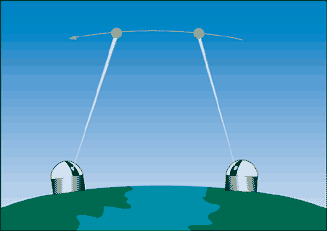Quick Links
Belmont Report
Synopsis of the Belmont SLR Workshop

The Goddard Space Flight Center Laboratory for Terrestrial Physics convened a two-day workshop in early February 1994 to assess the contribution of Satellite Laser Ranging (SLR) to meeting current scientific requirements and evaluate opportunities for improved cost effectiveness. The meeting took place at the Belmont Conference Center in Elkridge, Maryland and was attended by researchers in the field of Space Geodesy from Goddard Space Flight Center, the Center for Space Research of the University of Texas at Austin, the University of Maryland, the Smithsonian Astrophysical Observatory, the Massachusetts Institute of Technology, AlliedSignal Technical Services Corporation, and Hughes STX Corporation. After a comprehensive review of the latest analysis and instrument developments, the group formed the following conclusions:
- SLR is a proven geodetic technique with significant potential for substantive contributions to studies of the Earth/Atmosphere/Oceans system.
- SLR's ability to measure the temporal variations in the Earth's
gravity field and to monitor motion of the SLR station network
with respect to the geocenter, together with the capability to
monitor vertical motion in an absolute system, makes it unique
for modeling and evaluating long-term climate change by:
- Providing an absolute reference system for measurements of post-glacial rebound, sea level variations and ice volume change;
- Determining the temporal mass redistribution of the solid Earth, ocean, and atmosphere system; and
- Monitoring the response of the atmosphere to seasonal variations in solar heating.
- SLR is the most accurate technique currently available to determine the geocentric position of an Earth satellite, allowing for the precise calibration of radar altimeters and separation of long-term instrumentation drift from secular changes in ocean topography.
- SLR has proven to be a cost-effective means of providing failsafe redundancy to spaceborne radiometric tracking systems such as GPS, PRARE, and DORIS.
- SLR provides a unique capability for the experimental verification of special predictions of the Theory of General Relativity.
- The cost effectiveness of SLR operations will improve through increased standardization, configuration control, and automation.
Based on these conclusions, the Workshop recommends:
- NASA should maintain a set of SLR stations which will contribute to the global fiducial SLR network.
- Global SLR operations should make a transition to fixed fiducial stations with densified local measurements assumed by GPS and other techniques.
- NASA should vigorously pursue the development of SLR 2000, a fully automated, standardized, stand-alone, low-cost, subcentimeter SLR system.




